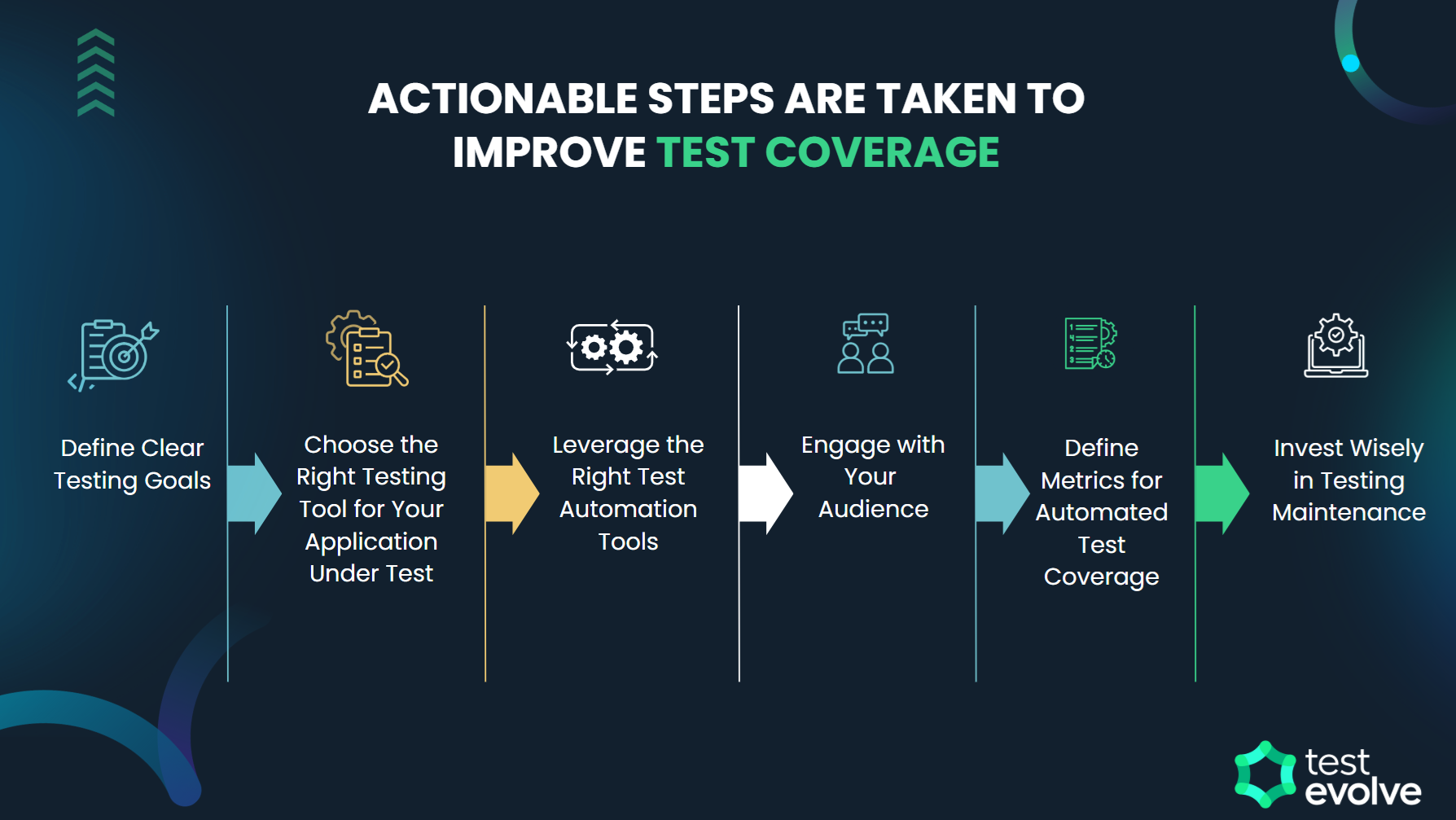How to Maximize Test Coverage in Minimal Time?
Test coverage is a critical metric in software testing, measuring how comprehensively a system's features and requirements are validated. It highlights gaps in testing, enabling QA teams to address vulnerabilities and ensure robust performance.
Comprehensive test coverage is essential to identify potential defects early, reduce production risks, and enhance software quality. By understanding which components are tested and which are overlooked, QA managers can allocate resources efficiently, optimise test strategies, and streamline development cycles.
This article explores proven strategies and tools to maximise test coverage within tight timelines, empowering teams to deliver reliable, high-quality software under demanding conditions.
What is Test Coverage?
Test coverage measures how thoroughly an application’s functionality and requirements are tested. In simple terms, it indicates "how much testing has been completed."
Expressed as a percentage, test coverage ensures critical areas of the software are validated, helping teams identify untested components and uncover potential issues.
It's important to note that test coverage is distinct from code coverage. While test coverage focuses on verifying application functionality from the user's perspective, code coverage evaluates how much code has been executed during testing.
The formula for calculating test coverage is:
Test Coverage = (Number of Requirements Tested / Total Requirements) × 100%
By monitoring test coverage, QA teams can ensure balanced, comprehensive testing across all critical features.
Types of Software Test Coverage
To ensure high-quality software delivery, various types of test coverage help measure and improve the effectiveness of testing processes. Each type targets specific areas, ensuring critical aspects of the application are adequately validated while minimising risks.
Test coverage isn’t just about running more test cases. It’s about strategically focusing on areas like requirements, risks, product components, and code paths to enhance quality assurance efforts. Below are the main types of software test coverage:
1. Product Coverage
Product coverage ensures that all functionalities, use cases, and business requirements of a software product are thoroughly tested to validate their performance and reliability.
It focuses on assessing how effectively the testing process addresses the product’s overall testability and completeness.
By identifying untested areas, product coverage helps QA teams optimise their test strategies and ensure no critical features are overlooked. This approach enhances software quality while reducing the likelihood of defects reaching production.
Example:
For an e-commerce shopping cart application, product coverage ensures the "add to cart" feature is tested alongside scenarios like handling out-of-stock items, updating quantities, and applying coupons.
Benefits:
Early Bug Detection: Catch issues in the development phase, saving time and resources.
Improved Code Quality: Optimises test cases by removing redundant ones, resulting in cleaner code.
Faster Feedback Loops: Automation accelerates feedback cycles, boosting team efficiency.
Defect Prevention: Reduces the risk of bugs leaking into production.
Higher ROI: Minimises post-release fixes, saving costs and improving profitability.
2. Risk Coverage
Risk coverage measures how well your testing efforts identify and mitigate potential risks that could compromise functionality, security, or performance. It involves analysing risks, ranking them by severity and likelihood, and creating test cases to address them. This ensures that the software’s critical areas are secure and stable.
Example:
For a banking application, risk coverage includes testing critical areas like secure login, payment transactions, and fraud detection to ensure vulnerabilities are minimised.
Benefits:
Setting Priorities: Helps testers allocate resources to the most crucial functionalities.
Business Impact Alignment: Aligns testing with customer and business needs.
Early Bug Detection: Reduces risk complexity by addressing issues in high-risk areas early.
Cost Savings: Prevents costly post-release issues by focusing on testing where it matters most.
3. Branch Coverage
Branch coverage ensures that every possible decision point in the code, such as conditional paths (e.g., "if-else" statements), is tested to validate all outcomes. This method uncovers logical errors, verifies code robustness, and improves overall software quality. Executing all branches ensures comprehensive testing for decision-based logic in the application.
Formula:
Branch Coverage = (Number of branches executed / Total branches in the code) × 100
Example:
In a payroll system, branch coverage would test scenarios like calculating overtime pay, handling tax exemptions, and applying deductions under varying conditions to ensure all decision points are covered.
Benefits of Branch Coverage:
Identifies Logical Errors: Helps uncover errors in decision-making code paths.
Improved Code Reliability: Ensures correctness in all potential scenarios, enhancing application stability.
Higher Test Quality: Validates decision points comprehensively, ensuring robust testing.
Increased Test Efficiency: Pinpoints untested branches, optimising testing efforts.
Reduced Maintenance Costs: Mitigates post-release bugs, saving time and money on fixes.
4. Requirement Coverage
Requirement coverage ensures that all functional and non-functional requirements are addressed by corresponding test cases, validating that the software meets business objectives and user expectations. It focuses on bridging the gap between client specifications and the final product, ensuring completeness and reliability in delivered functionalities.
Formula:
Requirement Coverage = (Number of requirements met by test cases / Total requirements) × 100
Example:
For a flight booking platform, requirement coverage includes validating functionalities like selecting travel dates, choosing seats, applying discounts, and generating e-tickets to ensure all client-specified requirements are fulfilled.
Benefits of Requirement Coverage:
Comprehensive Validation: Ensures all defined requirements are tested and met.
Improved User Satisfaction: Guarantees delivery of features aligned with user needs.
Reduced Risk of Missing Features: Prevents overlooked requirements from causing production issues.
Enhanced Traceability: Links test cases to specific requirements, making QA efforts more transparent.
Better Business Alignment: Ensures that the delivered product fulfills stakeholder and business expectations.
Actionable steps are taken to improve test coverage
1. Define Clear Testing Goals
To effectively enhance test coverage and ensure software quality, it's essential to establish well-defined testing goals. These goals should adhere to the SMART criteria: specific, measurable, achievable, relevant, and time-bound. Having clear targets helps streamline testing efforts and ensures that high-priority areas are adequately addressed.
Steps to Set Clear Goals:
Determine Desired Coverage: Specify the percentage of code lines, branches, or functions to be covered based on criticality.
Consider Risk Factors: Identify code areas likely to contain errors and set priorities accordingly.
Target High-Risk Areas: Focus on modules or components with a higher likelihood of failure.
Test Frequently Used Components: Prioritize components critical to user experience.
Well-defined testing objectives help optimize resources, focus on critical features, and ensure high-quality software with minimal defects.
2. Choose the Right Testing Tool for Your Application Under Test
Choosing a suitable testing tool is fundamental to achieving efficient test coverage. Automation frameworks like Selenium, Cypress, and Playwright cater to diverse project needs, while test management tools provide insight into testing gaps.
Factors to Consider When Selecting Tools:
Automation Framework Compatibility: Choose tools that integrate with your tech stack and support your development language.
Ease of Integration: Look for tools that integrate seamlessly with CI/CD pipelines.
Cloud vs. On-Premises: Opt for tools that suit your project scale and team requirements (e.g., Test Evolve, which links with Jira for real-time issue tracking).
The right tools streamline workflows, ensure effective resource utilization, and enhance team collaboration.
3. Leverage the Right Test Automation Tools
Automation is essential for increasing test coverage while testing continuously. By automating repetitive and time-consuming tests, your team can focus on complex testing scenarios.
Steps to Optimize Test Automation:
Tool Selection: Match tools to your project’s tech stack (e.g., Selenium for web apps, Appium for mobile).
Script Optimization: Write modular and maintainable test scripts. Use reusable components to minimize redundancy.
Continuous Monitoring: Regularly update scripts as the product evolves. Leverage platforms like Test Evolve’s Halo Dashboard for insights and regression testing oversight.
Efficient automation leads to better resource allocation, increased exploratory testing, quicker feedback loops and higher testing value.
4. Select the Right Testing Coverage Technique
Coverage techniques are essential for identifying gaps in testing. While "techniques" refer to the approach, "metrics" denote the actual measurements.
Key Techniques:
Product Coverage: Ensures all functionalities and use cases are tested.
Requirement Coverage: Validates that all user and business requirements are met.
Risk Coverage: Focuses on critical areas prone to errors or failures.
Compatibility Coverage: Ensures consistent functionality across platforms and devices.
Boundary Value Coverage: Identifies potential issues at input limits.
Using these techniques ensures a well-rounded approach to test coverage, addressing gaps effectively and efficiently.
5. Define Metrics for Automated Test Coverage
Metrics provide quantifiable insights into test coverage and reveal gaps that need attention. Tracking metrics ensures effective resource allocation and comprehensive testing.
Essential Metrics Include:
Flaky Tests: Identify and isolate unstable tests, addressing underlying script or code issues.
Defect Density: Measure the frequency of defects in a specific module or functionality to prioritize testing.
Test Execution Time: Monitor execution duration and parallelize tests to optimize runtime.
CI/CD Pipeline Stability Rate: Assess pipeline reliability to detect and address deployment-stage issues.
Regularly tracking these metrics ensures higher accuracy, reduced risk, and better alignment with business goals.
6. Invest Wisely in Testing Maintenance
Maintenance is critical for keeping test cases relevant and effective as the product evolves. Outdated or redundant tests can lead to inefficiencies and missed defects.
Best Practices for Maintenance:
Review Test Scripts Periodically: Regularly assess test scripts for relevance and effectiveness.
Update for New Features: Ensure new functionalities are tested adequately.
Optimize Resources: Automate regression testing to free up resources for exploratory testing.
Well-maintained tests reduce overhead costs, ensure reliability and seamlessly integrate into agile development cycles.
Review your increase in Exploratory and Automated Test Coverage with the Test Evolve Halo Test Results Dashboards
Leveraging tools like the Test Evolve Halo Real Time Results platform can significantly enhance test coverage by providing real-time insights to your test runs and deep analysis of the failures. Its seamless integration with frameworks and platforms enables continuous testing, allowing teams to identify untested areas and optimise resource allocation effectively.
With features such as functional regression testing visualisation, the dashboard facilitates go/no-go release decision-making and accelerates quality feedback to the delivery team.
By incorporating a robust toolset like Test Evolve Spark, Flare and Halo, QA teams can ensure higher effectiveness, better software quality and reduced risk of defects in production.




